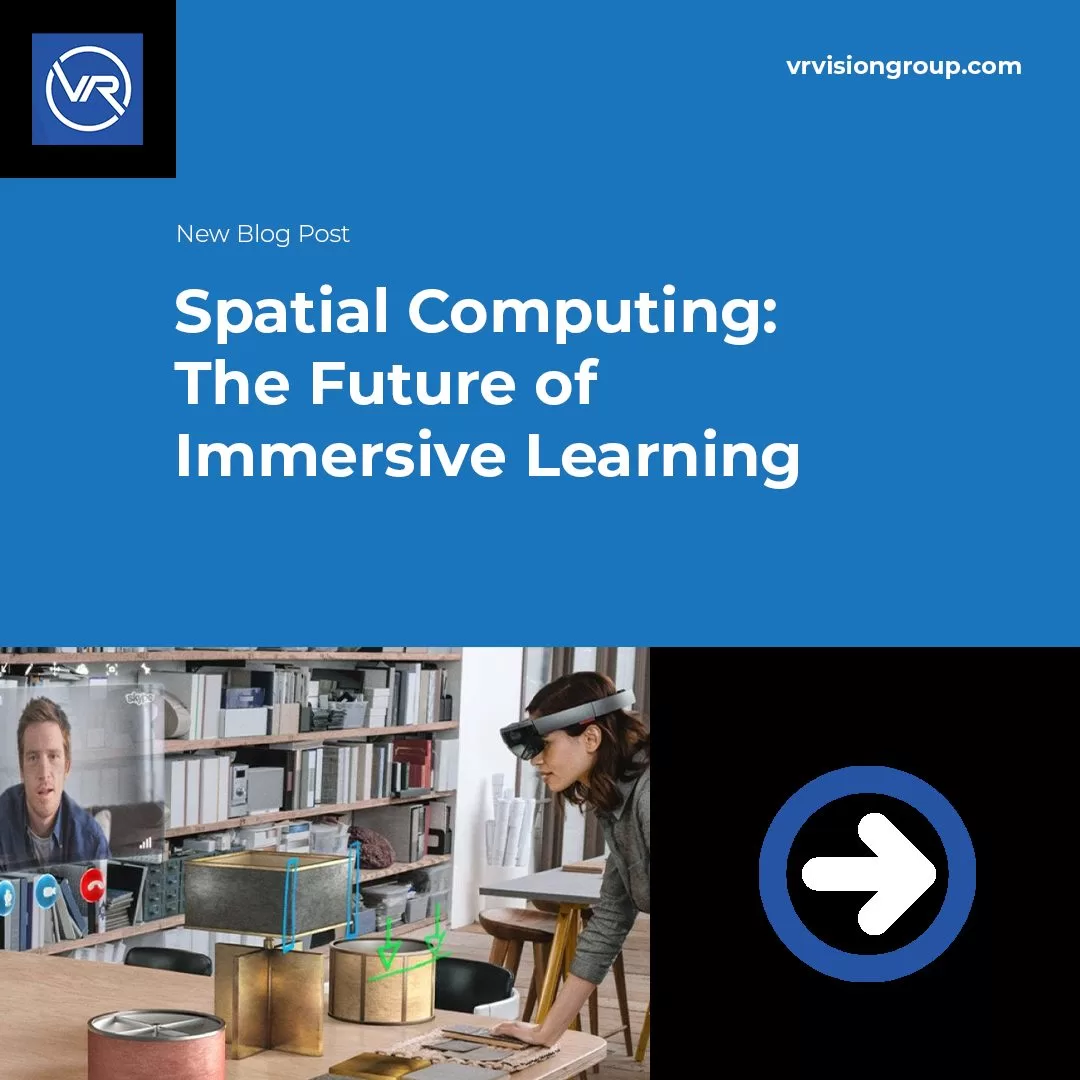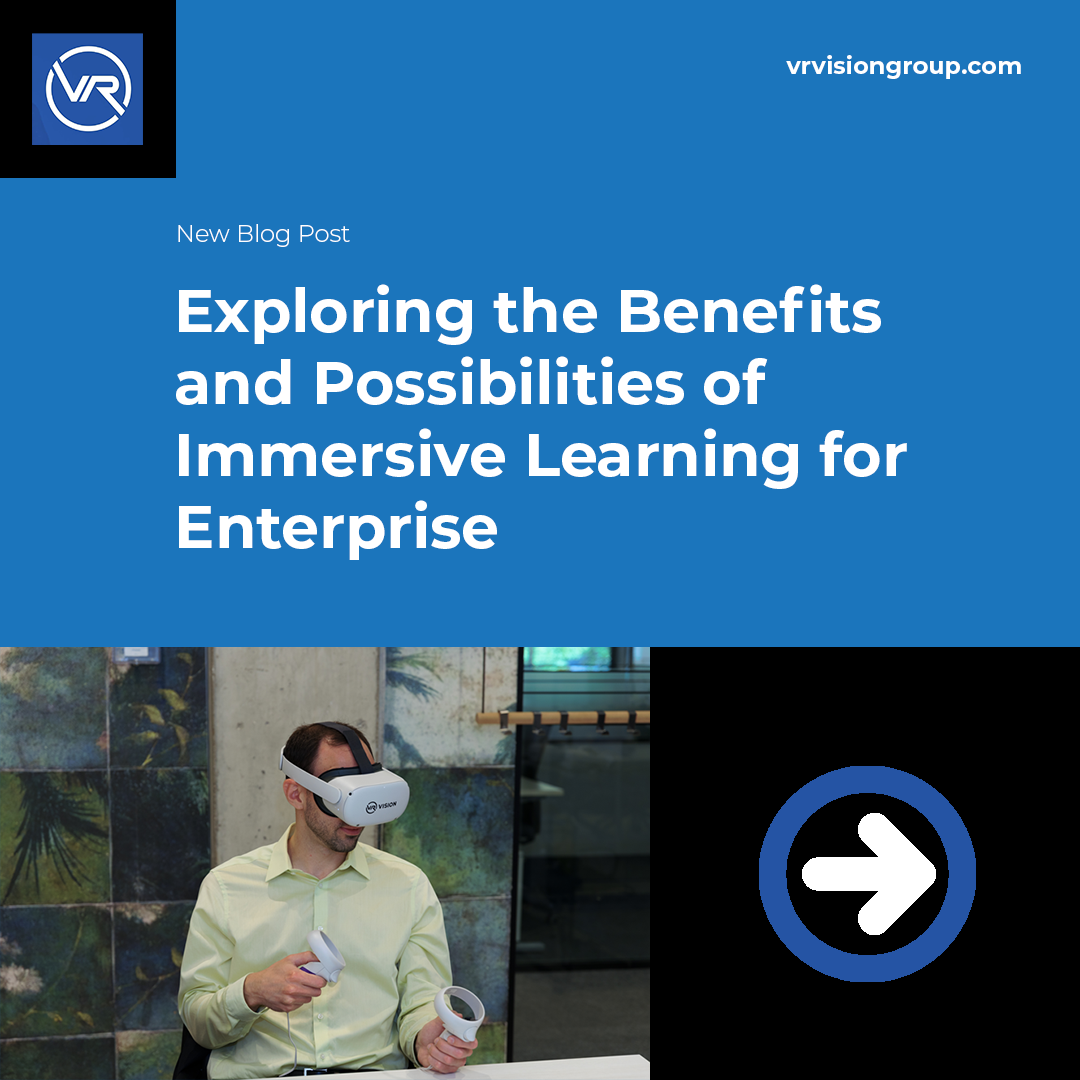Revolutionizing Employee Onboarding with Immersive Technology

In today’s fast-paced business world, effective employee onboarding is more crucial than ever. Advanced virtual reality solutions are transforming onboarding processes, making them more engaging, efficient, and impactful. This post explores how immersive learning is pioneering seamless and memorable onboarding experiences. The Power of Immersive Learning Traditional onboarding methods often fall short in engaging new employees and providing hands-on experience. We’ve looked to address these challenges by creating dynamic, interactive, and immersive onboarding experiences. By simulating real-world scenarios, immersive learning allows new hires to train and practice in a controlled, risk-free environment, significantly enhancing their readiness and confidence. Key Benefits of VR Onboarding Enhanced Engagement: VR environments captivate new employees, making the onboarding process enjoyable and memorable. Immersive learning keeps new hires engaged, ensuring they absorb and retain more information. Accelerated Learning: VR training modules enable employees to practice tasks repeatedly in a virtual setting, accelerating the learning curve and improving skill retention. Studies show that immersive learning can lead to 70% better retention rates compared to traditional methods. Consistency: VR training ensures a standardized onboarding experience, providing every new hire with the same high-quality training regardless of location. This uniformity is crucial for maintaining company standards and expectations. Cost-Effective: Implementing VR onboarding can significantly reduce training costs by minimizing the need for physical materials and in-person training sessions. With multiplayer-enabled training modules, companies can save on travel, accommodations, and other logistical expenses associated with traditional training methods. Data-Driven Insights: VR training platforms (Vision Portal) can track and analyze performance data, providing valuable insights into employee progress and areas for improvement. This data can be synced with enterprise LMS software to ensure a seamless adoption of the technology. This data-driven approach allows for continuous optimization of the onboarding process. Real-World Applications At VR Vision, we take pride in seeing our virtual reality solutions move beyond theory and truly revolutionize various industries. Our immersive technology isn’t just about innovation for innovation’s sake; it’s about providing practical, impactful applications that bring real-world benefits. Whether it’s enhancing learning experiences, memorizing complex procedures, or ensuring workplace safety, our cutting-edge VR training and development tools are making a tangible difference. Here are some compelling examples of how our technology is driving transformation across different sectors. Automotive Industry: There are many use cases for immersive learning but one of the biggest in terms of adoption is the automotive industry, specifically automotive manufacturing. This is where complex procedures can be replicated in digital twins in order to streamline onboarding of new employees and upskilling of current employees. When Toyota implemented VR Vision’s training modules to streamline the onboarding of technicians it changed the way they think about upskilling altogether. New hires can now practice complex procedures in a virtual environment, leading to faster onboarding times and reduced errors. This approach has resulted in significant cost savings and improved operational efficiency. It also allowed for Toyota to leverage the limited availability of their new forklifts to market to train employees remotely and in an engaged multiplayer environment. Energy Sector: VR Vision has also partnered with Avangrid to enhance its training programs using virtual reality. The VR modules enable new hires to safely practice maintenance and repair tasks in a simulated environment, significantly reducing the time required for onboarding and improving the accuracy of task execution. This immersive training approach has led to a 65% faster onboarding process compared to traditional methods and has boosted overall training effectiveness. Another example is our collaboration with Toronto Hydro. By integrating VR training, Toronto Hydro has transformed the way they prepare their employees for real-world scenarios. The VR simulations provide a safe and controlled environment for new hires to learn and practice not only dangerous real-world jobs but essential skills, resulting in improved operational readiness and enhanced safety standards. The use of VR training at Toronto Hydro has also led to a significant increase in employee engagement and confidence. For detailed case studies on how our VR solutions have transformed training processes, visit our case study page. The Future of Onboarding & Immersive Education The future of onboarding is all about harnessing advanced XR technologies to create immersive and personalized learning experiences. At VR Vision, we’re dedicated to pushing the boundaries of what’s possible in employee training and development. Our innovative VR solutions are tailored to meet the ever-changing needs of businesses, helping you stay ahead in a competitive market. By incorporating VR into your onboarding process, you can ensure that your new employees are not just well-prepared but genuinely excited to join your team. Immersive education through VR training leaves a lasting impression, cultivating a positive work culture from day one. Let’s make onboarding an experience to remember! Conclusion At VR Vision, we’re redefining the onboarding process, making it more engaging, efficient, and cost-effective than ever before. Our immersive VR solutions are designed to captivate new hires, accelerate their learning, and seamlessly integrate them into your team. Ready to take your onboarding to the next level? Discover how VR Vision can revolutionize your training and set your business up for success. For more information on our VR onboarding solutions reach out to us for a live interactive demo and experience the future of learning today! Relevant Sources and Further Reading The Ultimate Guide to VR Training Toyota Case Study Avangrid Case Study Hydro One Case Study By embracing VR technology for onboarding, businesses can create a more engaging, effective, and memorable experience for new employees, setting the stage for long-term success.









